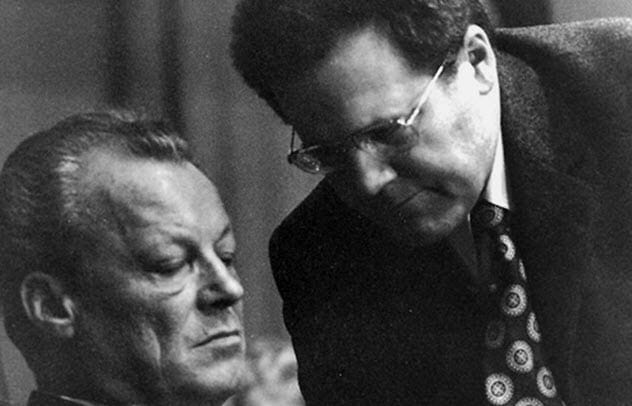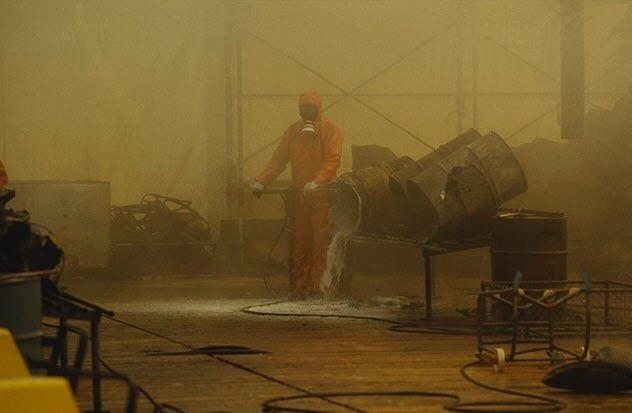When we think about the Cold War’s East side, the KGB and its Moscow operations often come to mind. Yet, the Stasi of East Germany, officially known as the State Security Service of the German Democratic Republic, remains one of history’s most ruthless secret police agencies.
The Stasi’s impact ranged from jailing political rivals and intensely monitoring citizens to embedding secret agents in the West. Its operations continue to fascinate those who study repressive organizations.
After the Berlin Wall fell and the Cold War ended, many details of the Stasi’s activities emerged. Here are 10 chilling revelations that highlight the agency’s brutality and harshness, rivaling even the operations in Moscow.
1. Part of a Repressive Regime

The Stasi rigorously watched and controlled its citizens, punishing anyone opposing the prevailing ideology. Strict regulations extended to hair length and clothing. The Stasi made it clear they were watching everyone, especially those viewed as state enemies.
They employed wiretaps, opened personal mail, and even drilled holes in walls for direct surveillance. It’s believed the Stasi had around 200,000 informants—either willing or forced—to monitor neighbors and family.
2. The Stasi Files Conspiracy

Knowledge about the Stasi largely comes from their secret files. In 1989, after the Berlin Wall fell, Stasi agents tried to destroy their paperwork, which included informant names, secret trials, and dealings with the West.
Although activists intervened, around 45 million pages were shredded, leaving 600 million pieces in over 15,000 bags. A special task force was later established to piece these files together, revealing much about the Stasi’s activities, though some secrets likely remain lost.
3. Arrests of Political Opponents

The Stasi closely monitored political opponents, often imprisoning them at Hohenschonhausen prison, where conditions were harsh. Former prisoners have described small cells and brutal interrogations intended to mentally weaken them.
Prisoners were forced to wear demoralizing tracksuits and were often unaware of the charges against them until sentencing. The goal was to extract confessions through mental exhaustion.
4. The Plan to ‘Rebrand’ the Stasi

As the communist regime weakened in the 1980s, East German authorities attempted to rebrand the Ministry for State Security as the Office for National Security. This was an attempt to maintain power under a different guise.
Legislation was passed to facilitate this change while Stasi agents destroyed incriminating files. Public outcry and the discovery of the destroyed files blocked the move, leading to the Stasi’s eventual breakup.
5. Training Castro’s Cuban Communists

The Stasi and Cuba’s Ministry of the Interior (MININT) had a close relationship. The Stasi trained Cuban security officers in methods mirroring their own, which a Cuban exile and former Stasi prisoner described as “almost a copy” of Stasi tactics.
During the 1970s and ’80s, the Stasi exported ideas, hardware, and computers to Cuba, facilitating surveillance and control. Tactics included using LSD during interrogations and bugging hotel rooms.
6. ‘Sleeper’ Agents in the West

The Stasi planted “sleeper” agents in the West who lived seemingly normal lives while reporting activities and, in some cases, influencing events. These agents often attained important positions in government or industry.
Gunter Guillaume, who became the secretary of West German Chancellor Willy Brandt, is a prime example. Guillaume regularly reported on Brandt’s activities, leading to Brandt’s public downfall when Guillaume’s true identity was revealed.
7. Disinformation About HIV/AIDS

The Stasi, in collaboration with the KGB, spread disinformation during the early HIV/AIDS pandemic. Known as Operation INFEKTION, the mission aimed to convince the public that the United States created HIV/AIDS as a biological weapon at Fort Detrick in Maryland.
Despite being false, the claims were widely believed and continue to persist in some circles, demonstrating the power of state-sponsored disinformation.
8. Assisting North Vietnamese Communists

In 1972, as the U.S. involvement in the Vietnam War decreased, the Stasi considered ways to assist North Vietnamese communists against the United States, primarily through intelligence training. Contact between North Vietnam and East Germany had been ongoing since the late 1950s.
The plans were partially realized, integrating North Vietnamese mindsets into intelligence procedures. The Vietnam War became a broader ideological battleground, with other communist nations offering support to the North Vietnamese regime.
9. The Sandoz Chemical Spill Conspiracy

Claims surfaced that the Stasi played a role in the 1986 Sandoz chemical spill to divert attention from the Chernobyl disaster. The allegations appeared in a German television documentary shortly after the fall of the Berlin Wall.
The documentary suggested the Stasi was behind several “chemical accidents” along the River Rhine, with a fire at the Sandoz factory being the most notable. The fire’s cause remains undetermined but led to significant environmental damage.
The claims, sourced from a former CIA agent, remain debated.
10. Turning Western Nations Against Each Other

The Stasi actively worked to create discord among Western nations. Division X was dedicated to smear campaigns, using photographs, state secrets, and recordings to spread disinformation.
In 1975, the Stasi secretly recorded talks between West German politicians Helmut Kohl and Kurt Biedenkopf and leaked it to the media, falsely claiming U.S. agents had made the recording. This successful propaganda mission fostered distrust of the United States in Europe.
These revelations highlight the Stasi’s pervasive and often shocking activities, underlining its role as one of the most formidable and insidious intelligence agencies in history.
Leave a comment below and share your thoughts on these chilling Stasi revelations.










